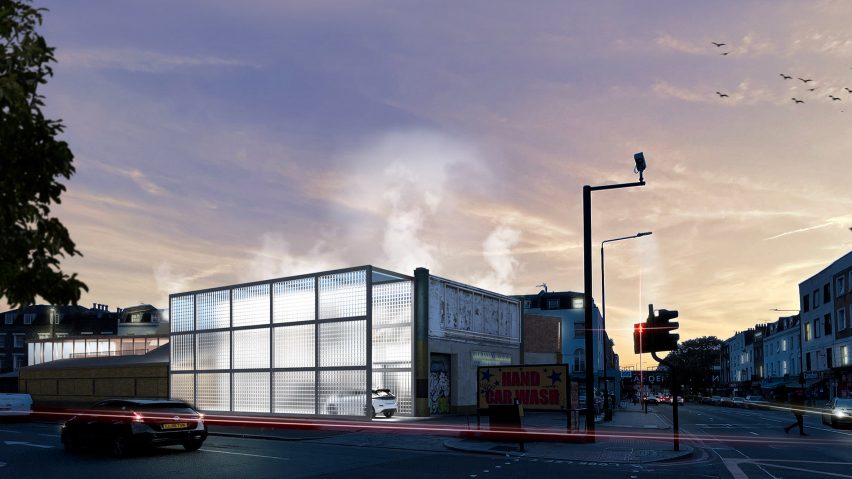
Eight student projects that assign new uses to existing buildings
Dezeen School Shows: we've picked eight student projects that feature in Dezeen School Shows exploring the possibilities of adapting previously built structures for new purposes.
These architecture, spatial design, urban design and interior design students have chosen to recycle and convert existing spaces as opposed to building new structures from scratch – a process sometimes referred to as adaptive reuse.
The resulting projects have both aesthetic and environmental merits, reducing pollution caused by construction and helping to maintain and make use of historic parts of the built environment.
Projects featuring in this roundup include an app that schedules and leases out disused car parks for community events, an initiative that makes use of the voids between film sets and a car wash reimagined into a bathhouse for night workers.
The selection of projects come from interior architecture, interior design, spatial design, urban design and architecture courses at international institutions including Florence Institute of Design International, University of the Arts London, Middlesex University, University of Hong Kong, University of Portsmouth, University of Oregon, Cardiff University and UCLA.
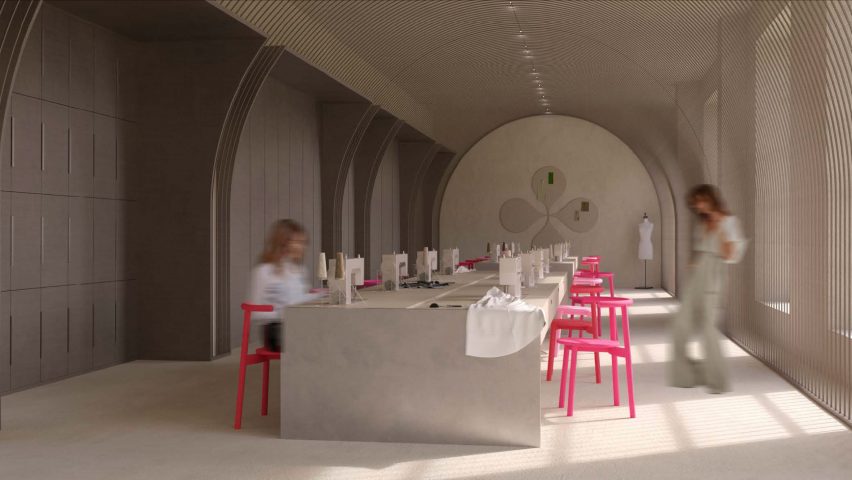
Antensi Sustainable Fashion School by Cristina Marhuenda
As part of her interior design course, student Cristina Marhuenda turned a 20th Century building in Milan into a sustainable fashion school.
The project installs individual and group study facilities, storage areas and exhibition spaces into the Palazzo del Toro, a mixed-use building that dates from the late 1930's.
"[My] idea emerged from the importance of giving awareness to younger generations of designers that can still make a change in the fashion industry, which has been a source of pollution since the 17th Century," said Marhuenda.
"[I] analysed and designed the spaces of Palazzo del Toro in the centre of Milan with a focus on straight lines, organic forms and textures."
Student: Cristina Marhuend
School: Florence Institute of Design International
Course: Interior Design – Design Research Project and Building Systems
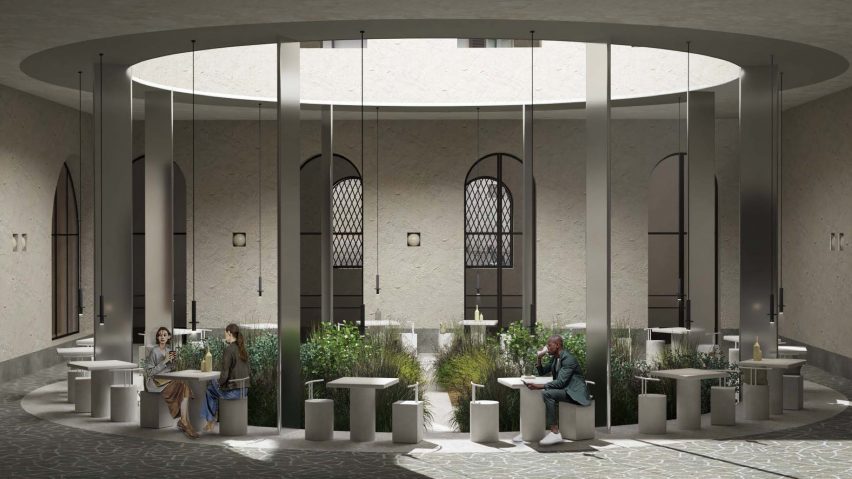
Dopo Holistic Wellness Center by Shay Levi
While studying interior design, Shay Levi created a scheme for a former convent in Florence, transforming the space into a wellbeing centre geared towards mental and physical recovery.
The building itself dates from the 14th Century, and traditional monastic herb gardens and the symbol of the seed of life informs the design.
"[I] transformed the building into a space of connectedness, growth and release, regularly returning to the themes of gravity, nature and cyclicality throughout the adaptation of the space," said Levi.
"Notably, Dopo features a ceramic workshop, as well as an herb and a hydroponic garden."
Student: Shay Levi
School: Florence Institute of Design International
Course: Interior Design – Design Research Project and Building Systems
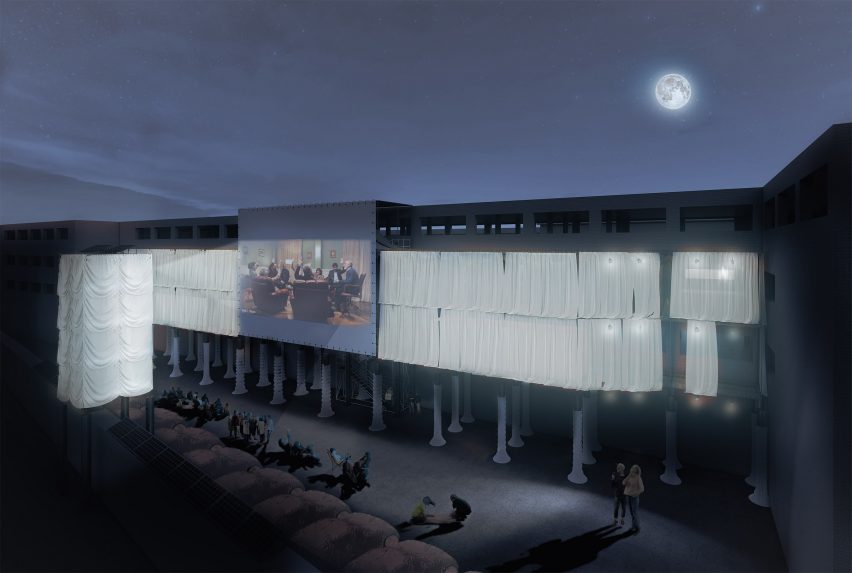
(Junk)scape – Rethinking and Recycling Non-Places by Kiwi Chan
Interior and spatial design student Kiwi Chan decided to focus on redundant urban spaces, turning them into useful venues for a host of community activities.
(Junk)scape makes use of areas like abandoned multi-storey carparks by making them easily to find and rent out organisers.
"This project represents creative ways to transform car parks from non-place, anonymous spaces to ones with urban character," said Chan. "This app rethinks and recycles under-utilised parking lots by using a renting and scheduling system."
Student: Kiwi Chan
School: University of the Arts London
Course: BA Interior and Spatial Design
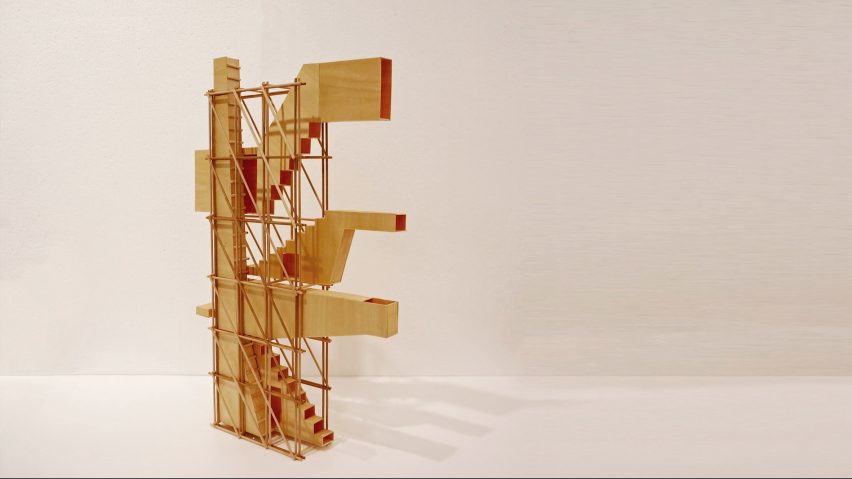
Intervening in the City – Ground or Facade? by Jiang Xinzi
Architecture student Jiang Xinzi took cues from the topographical nature of Hong Kong for this project, which aimed to explore the ways in which voids between existing structures in the city could be inhabited.
The scheme consists of narrow yet tall structures that feature ladders and stairs that connect different platforms and functionalities.
"The design responds to the different levels of the city in two ways – creating different inhabitable spaces for a variety of views, shifting the ground level with each platform and allowing the inhabitants to climb along the wall for multiple uses," said Xinzi.
"The design rethinks the relationship between the ideas of facade and ground, and imagines the way we inhabit the space between them."
Student: Jiang Xinzi
School: University of Hong Kong
Course: Architecture
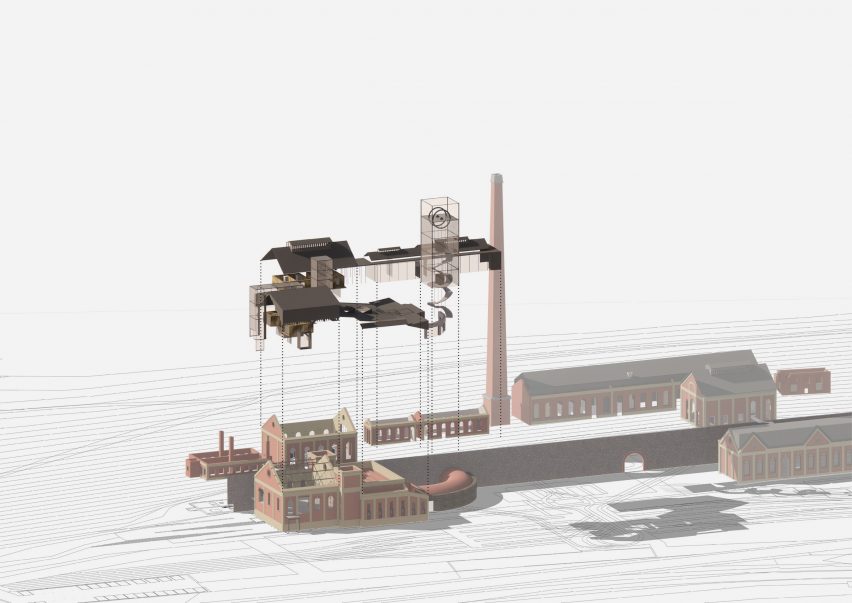
A Continuous Narrative of Industry by Jordan Grady
While studying for her masters degree in architecture, Jordan Grady investigated the possibilities for architectural intervention in the Crumlin Navigation Colliery in South Wales.
Grady's thesis analysed the ways in which the colliery – a coal mine and associated above-ground buildings – could be combined with contemporary sustainable architecture principles to assign it a new purpose.
"[The study] aims to discover how to appropriately weave this existing fabric into a new low-carbon, sustainable architecture, whilst protecting and integrating the historical value and interwoven memories of the Crumlin community," said Grady.
"New suggested methods of repair and a reconsideration of the listing process are vital for the thesis conservation principles to be successful, aiming to reshape the negative connotations related to the industry in South Wales and allowing this to inform the future of the site."
Student: Jordan Grady
School: Cardiff University
Course: Master of Architecture
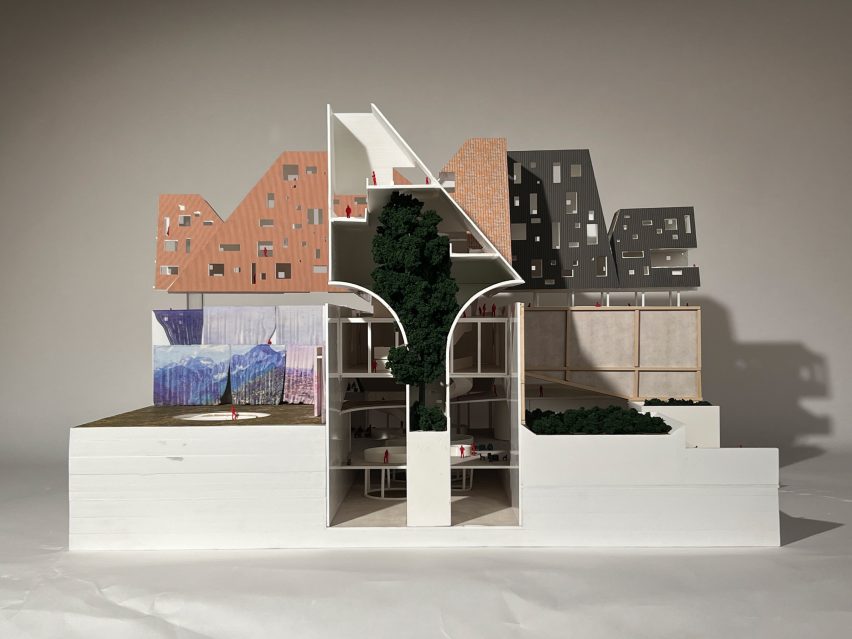
Future Histories: LA's Film Industry by Morgane Copp and Wei Qiu
Envisaging a future where digital technology makes physical movie sets obsolete, architecture students Morgane Copp and Wei Qiu came up with a scheme that reuses the negative voids between stage sets into areas that form a "new urban fabric".
Instead of building from scratch, the spaces would inhabit space between sound stages and would perform a range of functions.
"Instead of imagining a clean slate to exercise yet another version of tabula rasa towards a generic urban patterning, the project speculates on an alternative form of urbanism that challenges present norms and assumptions", Copp and Qiu said.
"By flipping the figure ground, in essence removing the roof of the obsolete sound stages, and building program in between these containers, we imagine a new urban fabric."
Students: Morgane Copp and Wei Qiu
School: UCLA
Course: Architecture
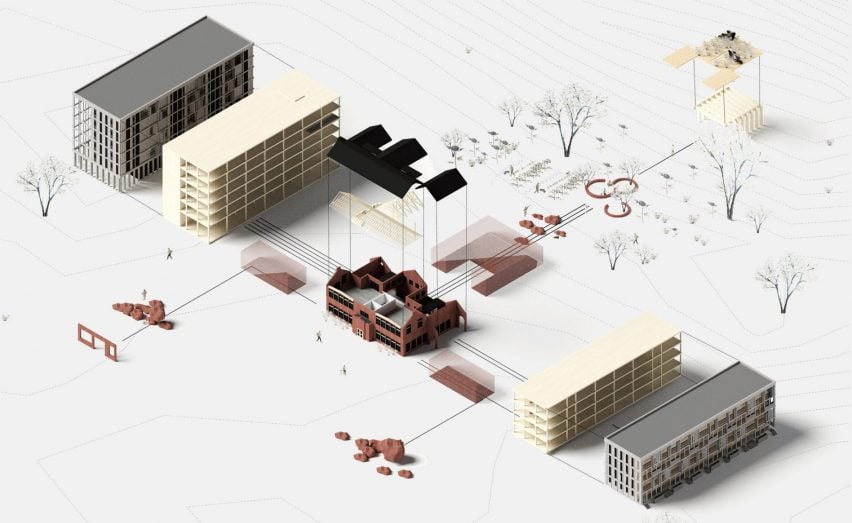
Maryland-School House by McKenzie Vanko
While studying architecture, student McKenzie Vanko developed a school building from the early 20th Century into a contemporary centre for early childhood education.
The scheme uses the building, which dates from 1922, as a central point for the development, which also contains over 40 units of affordable accomodation.
"Maryland-School House is a project that investigates time and the layering of old and new to speculate on housing that is lasting and meaningful," said Vanko. "The project takes an old school built in 1922 and renovates it into a centre for early childhood education while also adding 41 units of affordable housing that complement and will age well with the school."
Student: McKenzie Vanko
School: University of Oregon
Course: Architecture
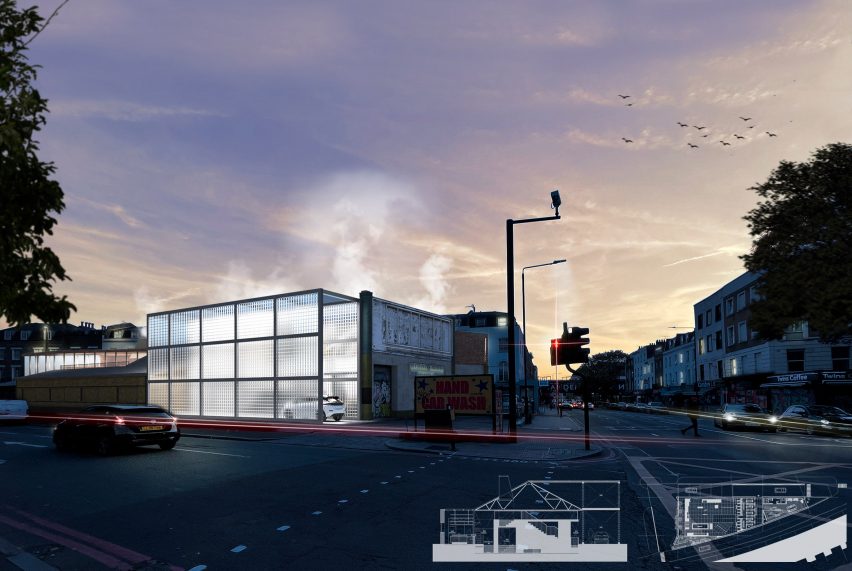
The midnight furnace by Seongmin Kim
While studying interior architecture, student Seongmin Kim created a scheme for a former urban carwash that transformed it into a stopping place for night workers.
Using the services that already existing within the building, Kim formed a design solution that allowed workers to bathe and socialise under one roof.
"The idea of taking care and using water to cleanse and transform is shifted from cars to night workers, a very niche and often neglected category," said Kim.
"Using adaptive reuse strategies, the key elements of this building were retained and a new public space connecting internal and external activities and spaces was inserted."
Student: Seongmin Kim
School: Middlesex University
Course: BA Interior Architecture
Partnership content
These projects are presented in school shows from institutions that partner with Dezeen. Find out more about Dezeen partnership content here.